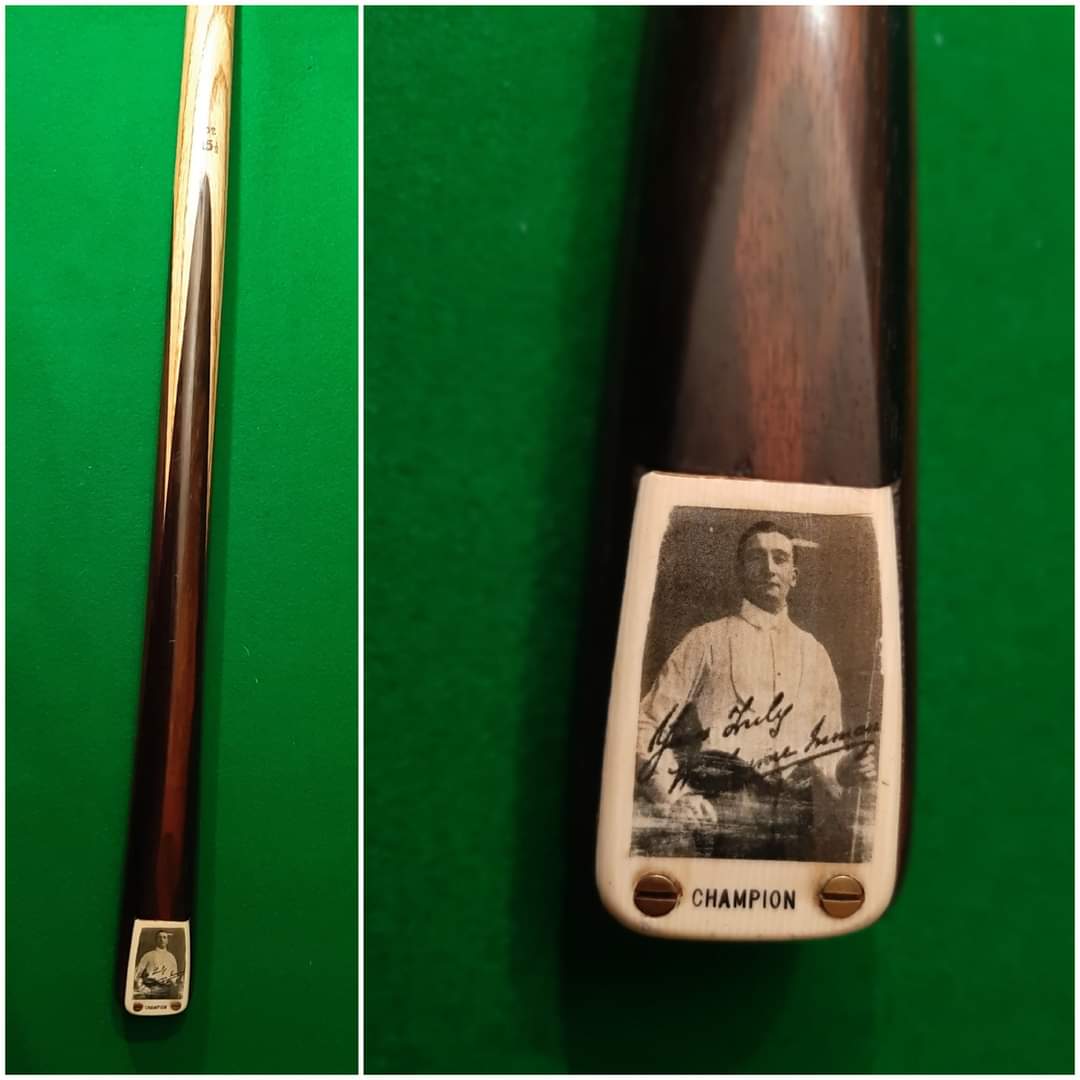
Melbourne Inman Cues
By Andy Hunter & David Smith
Melbourne Inman was born in London on 15th July 1878, receiving his unusual Christian name in honour of his uncle, Melbourne Tripp, rather than any connection with the Australian city of the same name.
Born into a billiards family, his father, two uncles, and three brothers all having made a century break at the game, he always seemed destined to become a player himself. His father managed The Twickenharn Club in London and it was here at the age of 14, that he began his career as a Marker.
His rise in the game was rapid. He won his first Professional Championship in 1908 and from then until 1920 was at the height of his powers. During this time he won the Championship five times, only Harry Stevenson managing to deprive him of the title for three of these 12 years at the top of his profession.
However he is perhaps best remembered for his intense rivalry with the brilliant but inconsistent Tom Reece. Inman was a tactical, defensive player. With his deliberate movements, slow play and liberal double-baulks. He was the perfect foil for Reece, who rarely defeated him for money.
In October 1906 Melbourne Inman made what was then a record for ivory balls scoring 300 points exclusively from the red losers. It was certainly a record for ivory balls, but it was still some way behind John Roberts’ run of 819 from the red ball (in a break of 821) which he had made with composition balls the previous year. That particular achievement was not recognised by the Billiard Association as the table had not been tested before the match. Roberts had also made a red-ball break of 372 with composition balls, back in 1898. However, all this did not deter Inman from advertising himself as the “champion losing-hazard player of the world and endorsing a cue, which proclaimed his achievement.
This cue is described as a “facsimile”, which was intended to be an exact copy of the cue used by Inman himself and would have been manufactured for about two years from the date of his achievement until 1909, when Harry Stevenson extended the ivory ball record to 354. This cue has a black ebony butt with a dark red ash shaft, indicating that the wood has been either steamed or it is old timber which has been reclaimed and reused.
The only other known Melbourne Inman cue was produced around the same time and has a picture-badge, which was superimposed with Inman’s signature. It usually has a plain or stripy ebony or Indian rosewood butt and an ash shaft. The cue would have been a typical billiard shape with a parallel end to the shaft and a wide butt.
Both of these cues are very rare, the “facsimile” brings between £200-£300, the picture badge between £250-£350.
Andy Hunter & David Smith
Melbourne Inman cue images








